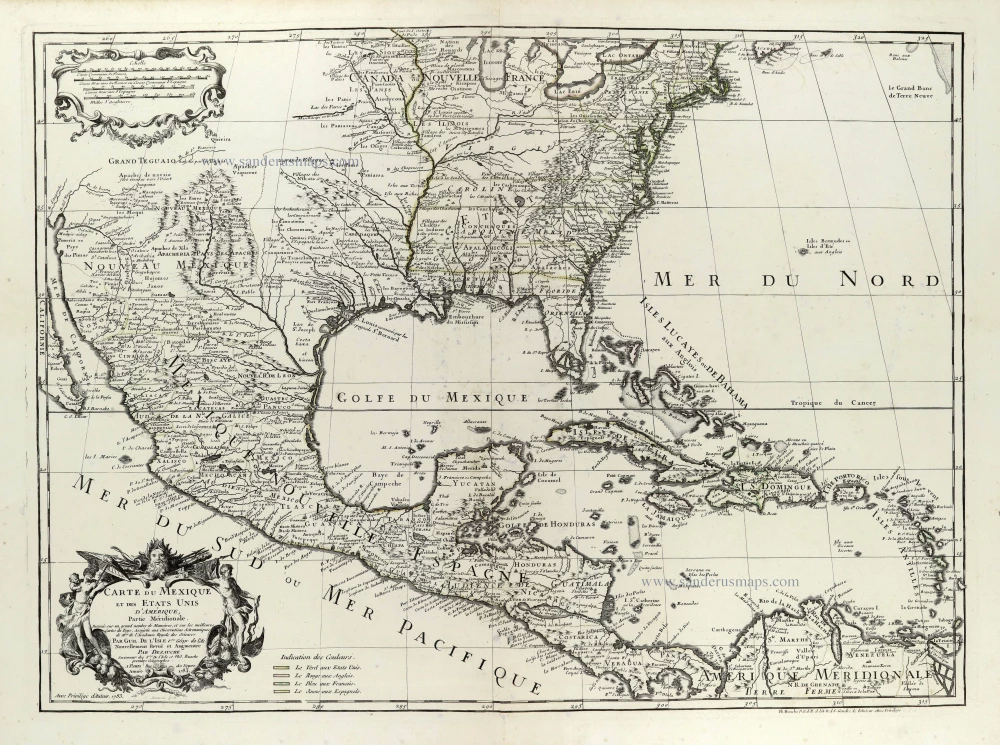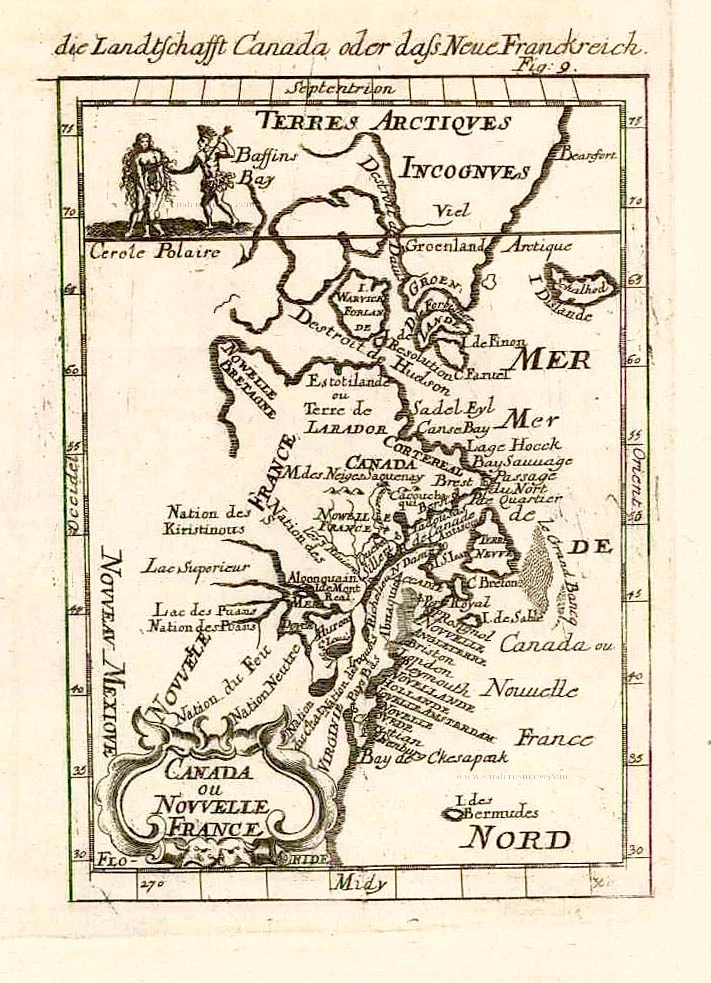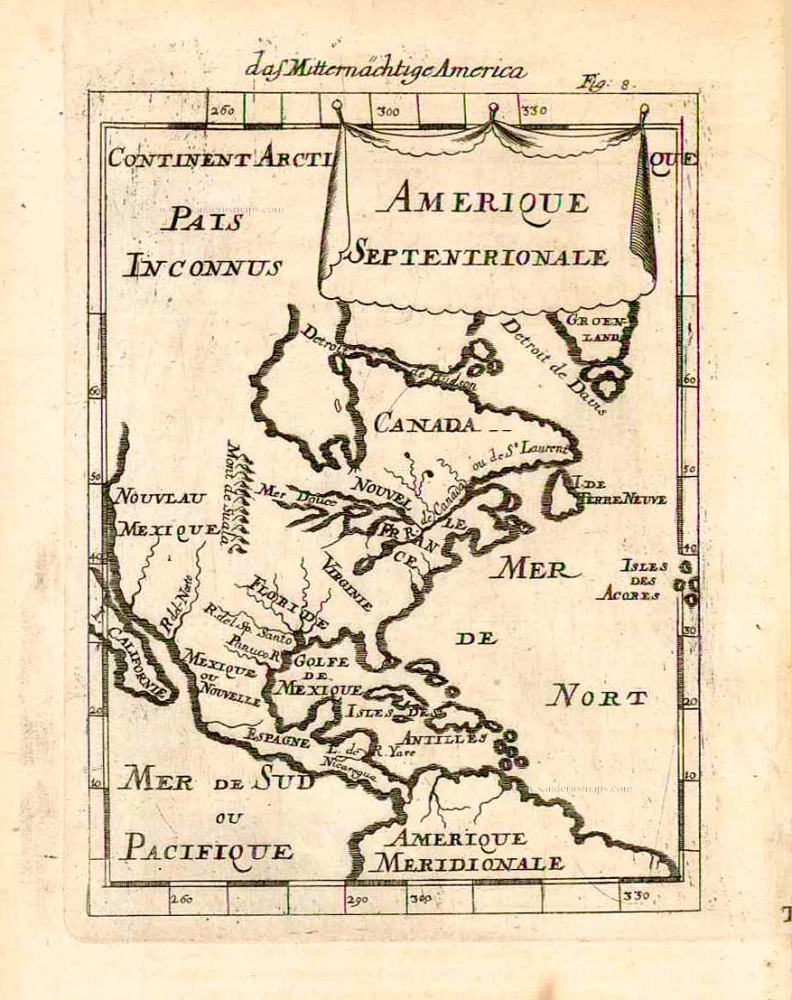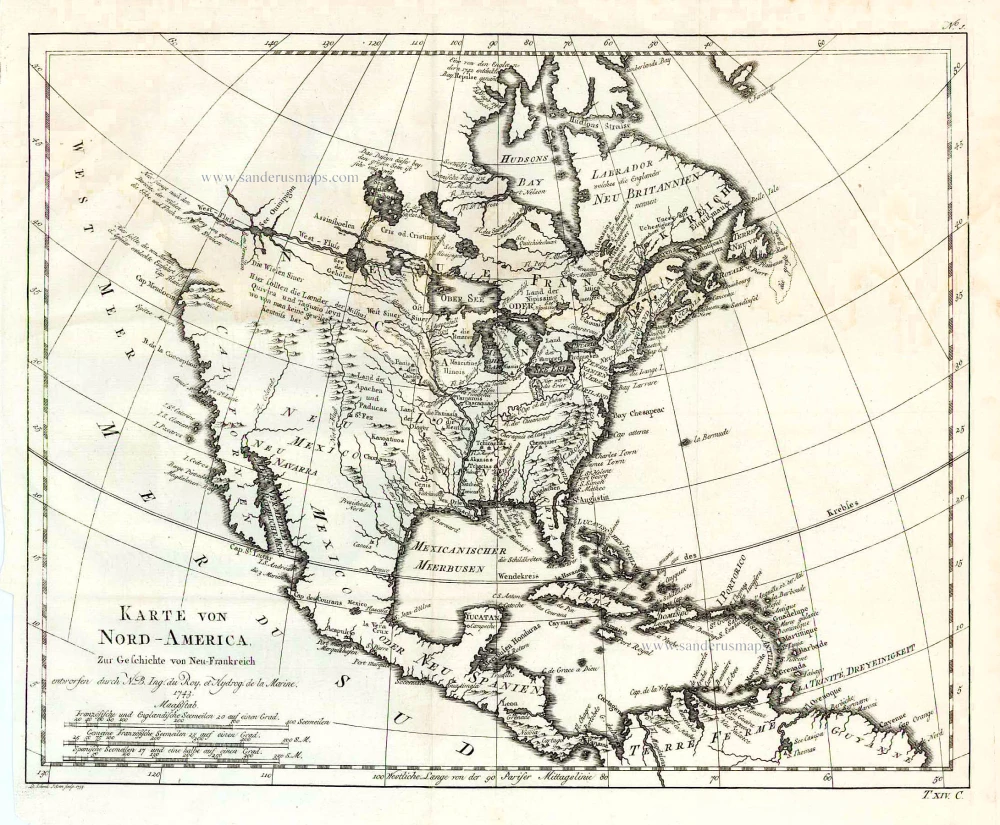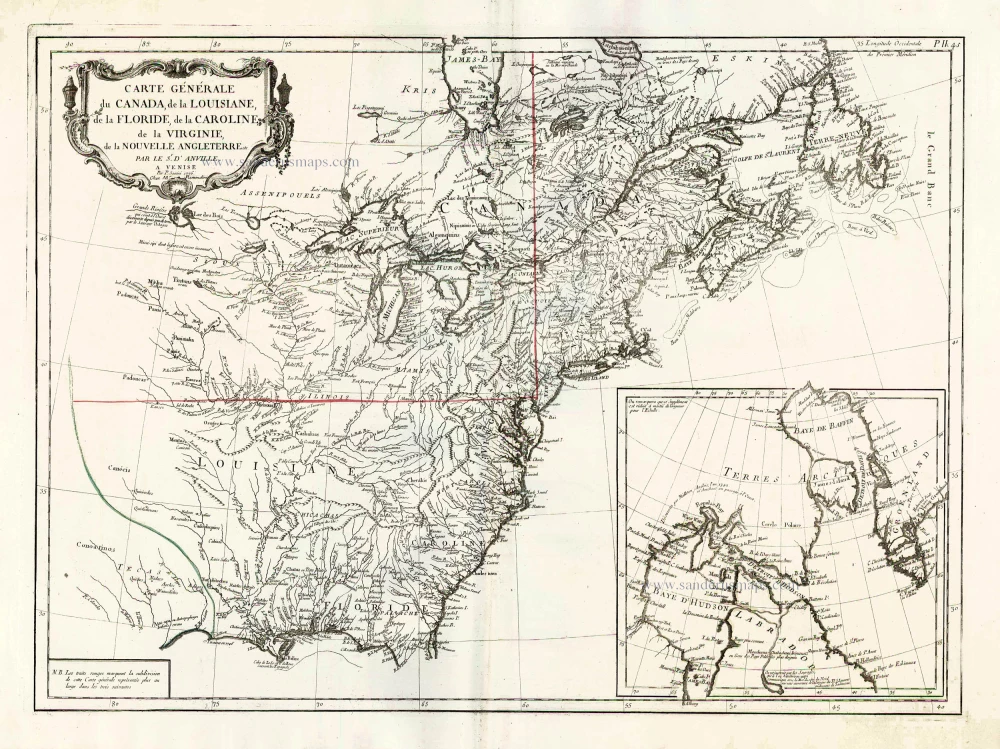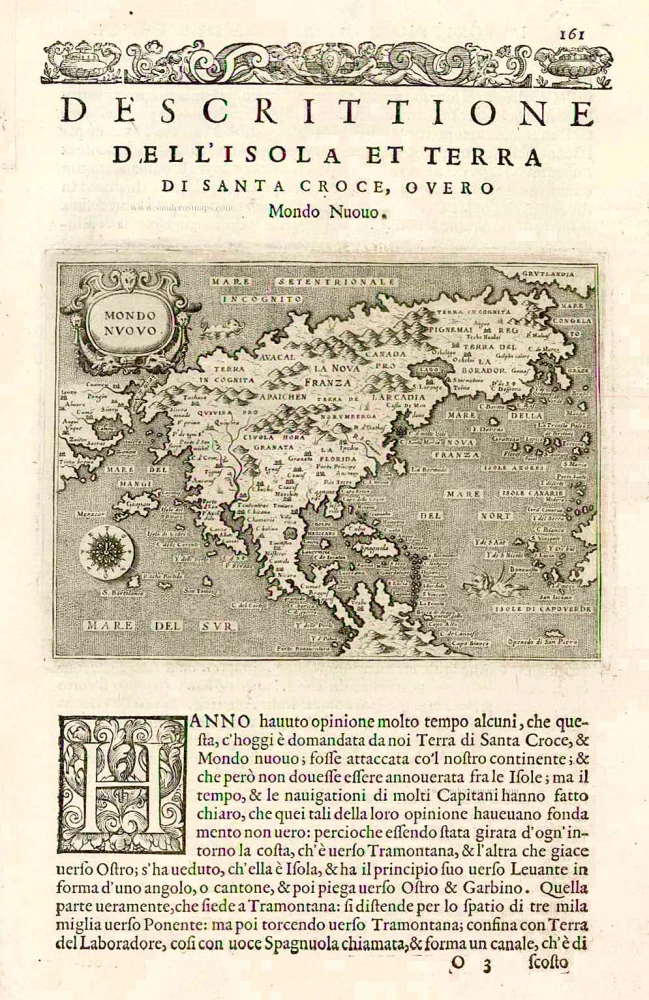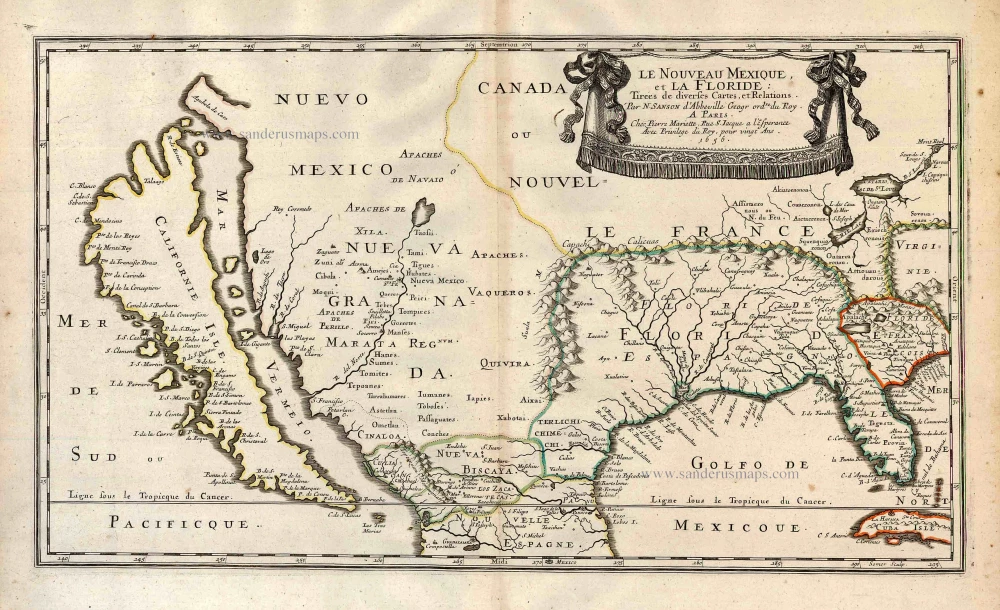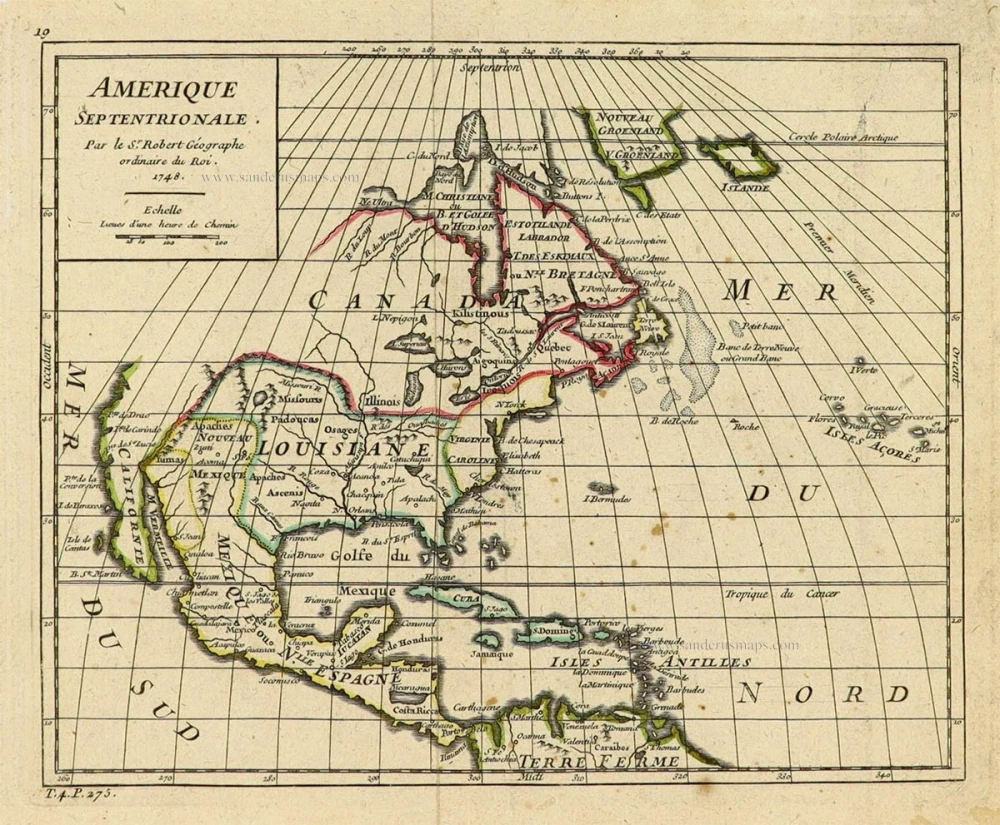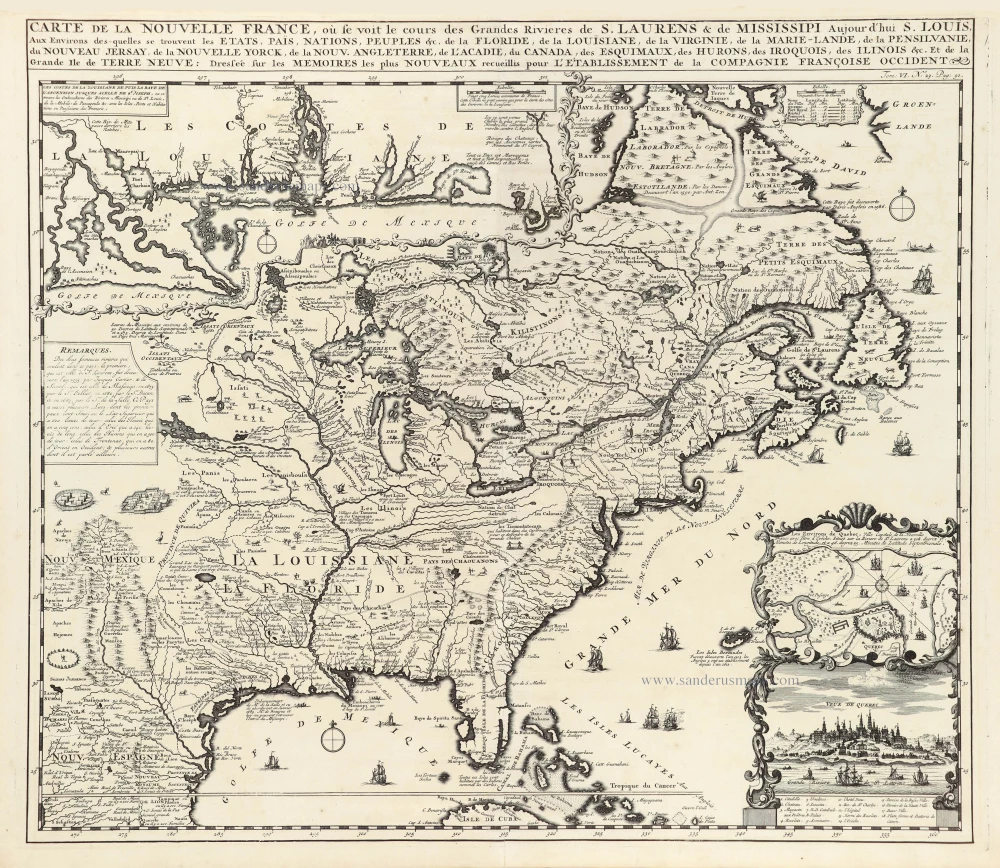Southern U.S. and Central America by Guiilaume Delisle, Philippe Buache, and Jean Claude Dezauche. 1789
Compared to the map of Delisle, the United States is now extended westward to the Mississippi, and the boundaries are inserted in colour to indicate the other possessions; green for the U.S.A., red for England, blue for France and yellow for Spain.
.
Guillaume Delisle (Paris, 1675 – 1726)
Guillaume Delisle (de L’Isle), one of the key figures in the development of French cartography, is the son of Claude Delisle, a cartographer, and the half-brother of astronomers Joseph-Nicolas Delisle and Louis de l'Isle de la Croyère.
While his father has to be given credit for educating Guillaume, the boy showed early signs of being an exceptional talent. He soon contributed to the family workshop by drawing maps for his father's historical works. To perfect his skills, Guillaume Delisle became the student of the astronomer Jean-Dominique Cassini. Early on, he produced high-quality maps, the first being his Carte de la Nouvelle-France et des Pays Voisins in 1696. Delisle's first atlas appeared around 1700, and in 1702 he became a member of the French Académie Royale des Sciences. He taught geography to the young Louis XV, and in 1718 he received the title of Premier Géographe du Roi. On a commission from Peter the Great, he produced a map of the Caspian Sea, a region barely known. Many of the place names he gave are still in use. His Carte de la Louisiane et du cours du Mississippi (1718) is the first detailed map of this region.
A six-year-long plagiarism trial pits Delisle against Jean-Baptiste Nolin, cartographer. It is Nolin, the real plagiarist, who loses.
Delisle has remained famous for his astronomical-based corrections and the completeness of its topography. The high scientific quality of the work produced by the Delisle family contrasted with the workshop of Sanson. While Sanson knowingly published outdated facts and mistakes, Delisle constantly updated his maps to reflect widening knowledge of the world.
Philippe Buache (1700-1773)
One of the foremost French geographers of the 18th century, he was noted for his theoretical cartography.
He was the son-in-law of Guillaume Delisle and inherited Delisle's business and entered the Depôt des Cartes et Plans de Marin in 1721. In 1729 he was appointed "Premier Géographe du Roi". On Buache's death, his widow sold his work to Jean Nicholas Buache de la Neuville, Philippe's nephew, and in 1780 Dezauche bought it from him together with work by Delisle, Jaillot, and others. He, in turn, made his own alterations and improvements to the maps and then re-issued them in a revised form.
Jean Claude Dezauche (1745-1824)
French engraver, geographer, editor and map seller. He was one of the most influential geographer-publishers in the establishment of the French theoretical approach to cartography. He acquired the work of many other geographers and cartographers, including that of Guillaume Delisle and Philippe Buache.
Carte du Mexique et des Etats Unis d'Amerique, Partie Meridionale.
Item Number: 28426 Authenticity Guarantee
Category: Antique maps > America > West Indies
Old, antique map of the Southern U.S. and Central America, by Delisle Guillaume - Philippe Buache - Jean Claude Dezauche.
Title: Carte du Mexique et des Etats Unis d'Amerique, Partie Meridionale.
Dressée sur un grand nombre de memoires, et sur les meilleures Cartes du Pays. Assujetie aux Observations Astronomiques de Mrs de l'Academie Royale des Sciences.
Par Guil.De L'Isle 1ers Géogr. de l'Ac.
Nouvellement Revue et Augmentée Par Dezauche Successeur des Srs De l'Isle et Phil. Buache premiers Géographes.
A Paris Rue des Noyers
Année 1783.
Avec Privilège d'Auteur. 1783.
Engraver: Charles-Louis Simonneau.
Date of the first edition: 1703 (= Delisle).
Date of this map: 1789.
Date on map: 1783.
Copper engraving, printed on paper.
Map size: 480 x 650mm (18.9 x 25.59 inches).
Sheet size: 545 x 735mm (21.46 x 28.94 inches).
Verso: Blank.
Condition: Coloured in outline (colours faded), excellent
Condition Rating: A+.
References: Tooley (America), p.23 #53
From: Atlas Géographique et Universel. Paris, J.Cl. Dezauche, 1789.
Compared to the map of Delisle, the United States is now extended westward to the Mississippi, and the boundaries are inserted in colour to indicate the other possessions; green for the U.S.A., red for England, blue for France and yellow for Spain.
.
Guillaume Delisle (Paris, 1675 – 1726)
Guillaume Delisle (de L’Isle), one of the key figures in the development of French cartography, is the son of Claude Delisle, a cartographer, and the half-brother of astronomers Joseph-Nicolas Delisle and Louis de l'Isle de la Croyère.
While his father has to be given credit for educating Guillaume, the boy showed early signs of being an exceptional talent. He soon contributed to the family workshop by drawing maps for his father's historical works. To perfect his skills, Guillaume Delisle became the student of the astronomer Jean-Dominique Cassini. Early on, he produced high-quality maps, the first being his Carte de la Nouvelle-France et des Pays Voisins in 1696. Delisle's first atlas appeared around 1700, and in 1702 he became a member of the French Académie Royale des Sciences. He taught geography to the young Louis XV, and in 1718 he received the title of Premier Géographe du Roi. On a commission from Peter the Great, he produced a map of the Caspian Sea, a region barely known. Many of the place names he gave are still in use. His Carte de la Louisiane et du cours du Mississippi (1718) is the first detailed map of this region.
A six-year-long plagiarism trial pits Delisle against Jean-Baptiste Nolin, cartographer. It is Nolin, the real plagiarist, who loses.
Delisle has remained famous for his astronomical-based corrections and the completeness of its topography. The high scientific quality of the work produced by the Delisle family contrasted with the workshop of Sanson. While Sanson knowingly published outdated facts and mistakes, Delisle constantly updated his maps to reflect widening knowledge of the world.
Philippe Buache (1700-1773)
One of the foremost French geographers of the 18th century, he was noted for his theoretical cartography.
He was the son-in-law of Guillaume Delisle and inherited Delisle's business and entered the Depôt des Cartes et Plans de Marin in 1721. In 1729 he was appointed "Premier Géographe du Roi". On Buache's death, his widow sold his work to Jean Nicholas Buache de la Neuville, Philippe's nephew, and in 1780 Dezauche bought it from him together with work by Delisle, Jaillot, and others. He, in turn, made his own alterations and improvements to the maps and then re-issued them in a revised form.
Jean Claude Dezauche (1745-1824)
French engraver, geographer, editor and map seller. He was one of the most influential geographer-publishers in the establishment of the French theoretical approach to cartography. He acquired the work of many other geographers and cartographers, including that of Guillaume Delisle and Philippe Buache.

